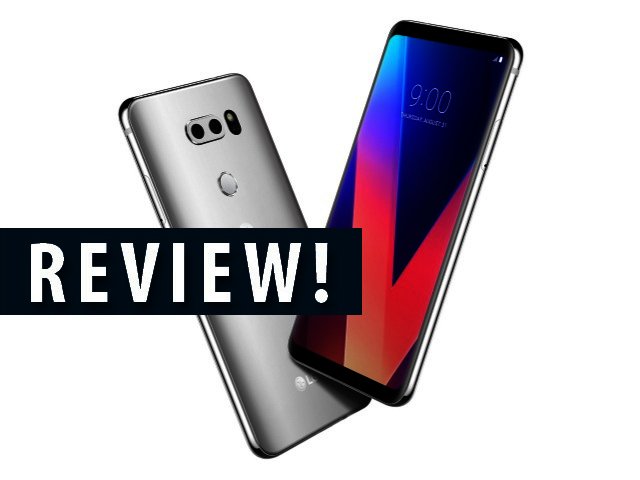There is something to be said about expectations. The LG V20 surprised many as one of the best smartphones of 2016, and proved that the V series of devices from the South Korean manufacturer are indeed its standout offering at the moment. As such, all eyes were on LG when they unveiled the V30 and V30+ earlier this year, and for good reason.
It appears as if the LG G series is where the company chooses to do a bit of experimentation, and the V series is used to fine tune and perfect the mobile experience. The LG G5 and LG V20 are clear examples of this, where the former favoured an intriguing but ultimately flawed modular design, and the latter kept things simple and utilised high powered components.
Fine tuning
The same could be said for this year's iteration of devices, with the LG G6 introducing a longer FullVision display and new design aesthetic. So how does the V30+ fare in terms of enhancing all of those new LG elements?
Before we answer that, let's take a moment to discuss the difference between the LG V30 and V30+. Unlike other 'plus' versions of flagship phones, this LG variant has nothing to do with increased dimensions, but rather greater onboard storage. To that end, it comes with 128 GB of space, opposed to the standard 64 GB of the V30.
Now that has been cleared up, it's time to delve deeper into the V30+'s design. Instead of channeling the G6 as inspiration, the V30+ reminds us more of Samsung's recent Galaxy S offerings. The back cover in particular has an air of S8 about it, with the same combination of glass and metal, as well as slight curves integrated into the corners of the phone.
Couple of changes
All in all it's a handsome design and yields the premium feel that one might expect from a flagship phone that costs R15 649 (RRP). Up front is a 6.0" display with an 18:9 aspect ratio and 2880x1440 resolution. The truly interesting aspect of this is the OLED screen, which makes things pop just a tad more than the G6's LCD variant. When you're watching a lot videos or playing numerous games on the V30, the change in screen type makes a marked difference.
Another difference is a slightly wider body at 75.4 mm compared to the G6's 71.9 mm frame. Luckily, the V30+ is not harder to cradle in hand, but single handed use can be a tad difficult at times. Those that like their power button on right hand side of the phone may become acutely aware that it is absent on the V30+ (and V30), with the fingerprint scanner on the rear doubling as the power/home button. Users can also double tap the screen to 'wake' the device and swipe to unlock from there. We really enjoyed the fingerprint scanner on the V30+, especially as it's highly responsive and very rarely failed to register a finger when placed.
High powered
Now for the internal specifications, which was one area that the V20 truly impressed last year, even achieving the highest benchmark score of last year's reviewed phones. Unfortunately, the V30+ does not carry the same honour this year, but still scored a high ranking mark of 167 156 on AnTuTu (v6.2.7). This is only bested by the Samsung Galaxy S8 (168 990), Huawei Mate 10 Pro (175 900) and Sony XZ Xperia Premium (179 449) to date.
Benchmark scores aside, the V30+ is fast and snappy while multitasking, showing no signs of sluggishness. Add to that a few nifty features like the handy second screen, as well as the floating bar, and the V30+ can be customised to be a truly efficient mobile device that productivity-focused users will enjoy.
On top of that, the choice of an octa-core Qualcomm Snapdragon 835 processor and 4 GB RAM mean the V30+ is a bit more future proof than the G6, which houses a Snapdragon 821 chipset. This is an important element in our opinion, particularly as potential users will have to drop at least R15k for the device, and will want a minimum of two year's (if not more) worth of use from it.
On the rear
When the V30 and V30+ were unveiled in September, much of the focus was on the camera setup, and the video capabilities of the devices. Having tested both aspects, LG highlighted them for good reason. First the photo taking functionality, which is supported by an dual camera setup, with a 16 MP f/1.6 lens and 13 MP f/1.9 wide angle option. The former is what impressed us most, with images captured looking far more detailed than they did on the G6. The in-camera brightness scale does not need to be used as much on the V30+, which was one of the minor issues we had with the G6.
As far as the video recording goes, the V30+ is fitted with a handful of cinematography tools to improve the overall experience. These include the ability to zoom in on different areas of the screen, as opposed to only being able to zoom in on the central part of the display. While handy for smartphone users that use their devices to record a lot of footage, these features don't really feel like standout reasons to get the V30+, nor do we think they'll turn reluctant video shooters into seasoned ones.
While that may sound like a criticism, it's quite the contrary, with the V30+ providing a great all-round camera experience.

Image taken with the LG V30+ (HDR).
Final verdict
Is the LG V30+ a fair bit more than the LG G6 at R15 649? Yes it is, but for good reason. Each element of the device has been fine tuned to deliver a solid overall performance that the G6 just misses the mark on. When you're dropping that much money on a flagship phone, you don't want to have any doubts as to the capabilities of your device, and the V30+ is really without fault.
So much so in fact, that we reckon it comes closer than any other device this year to surpassing the Samsung Galaxy S8 as the best smartphone of 2017 to date.





